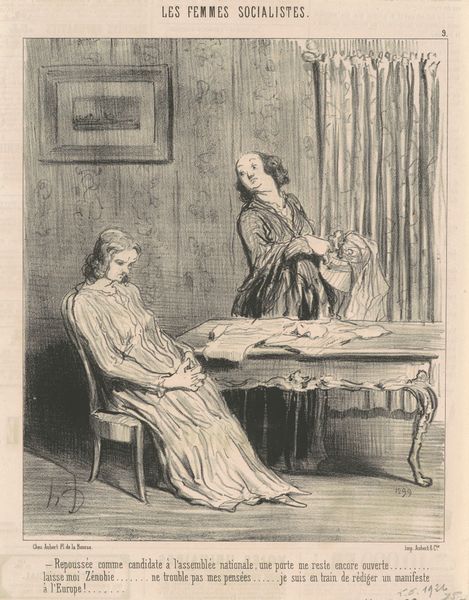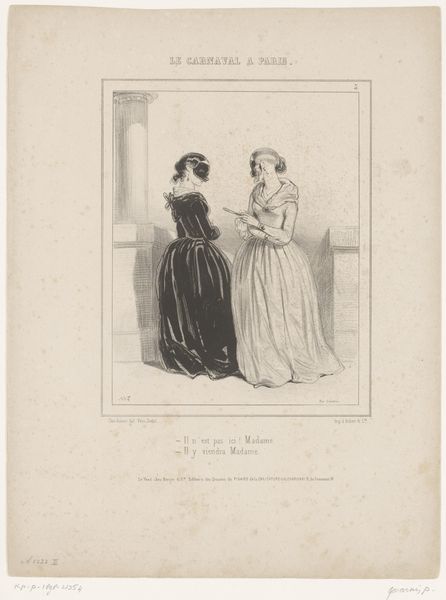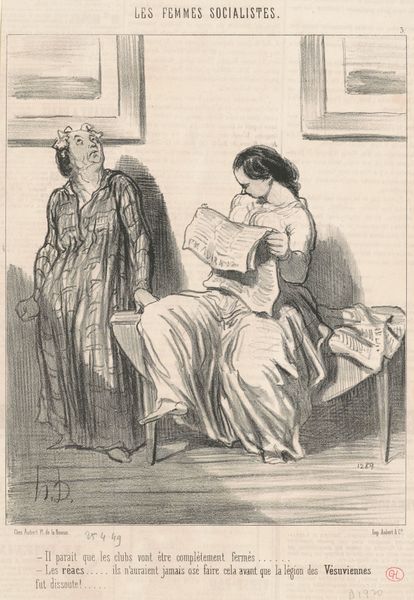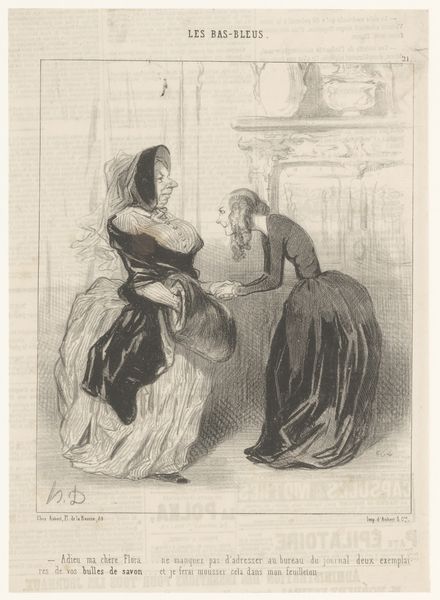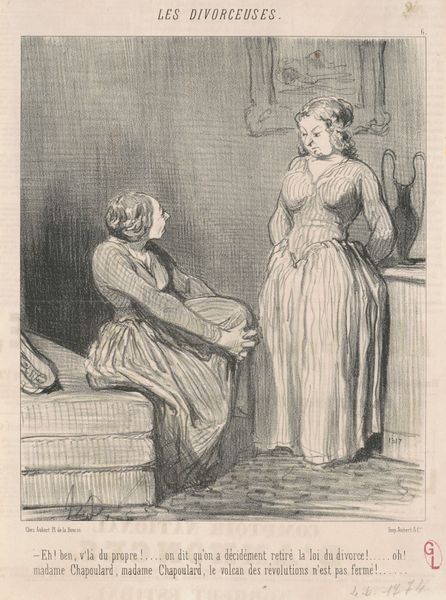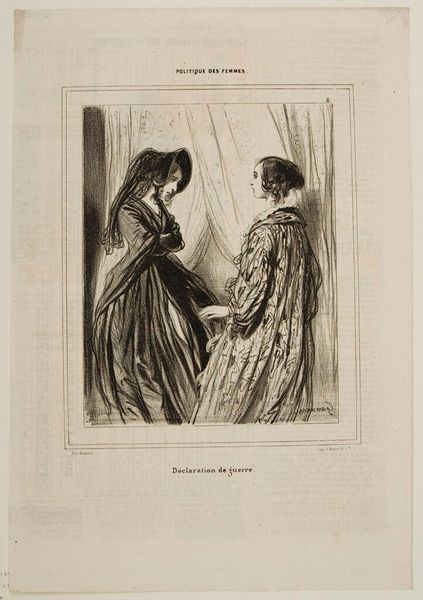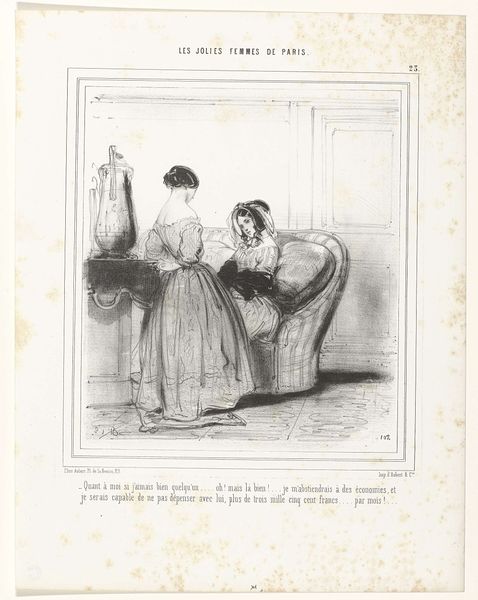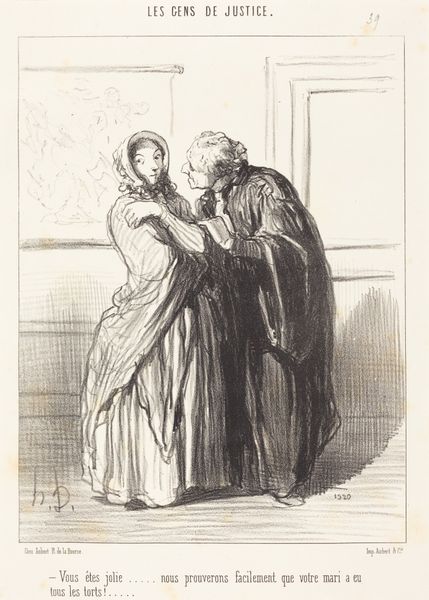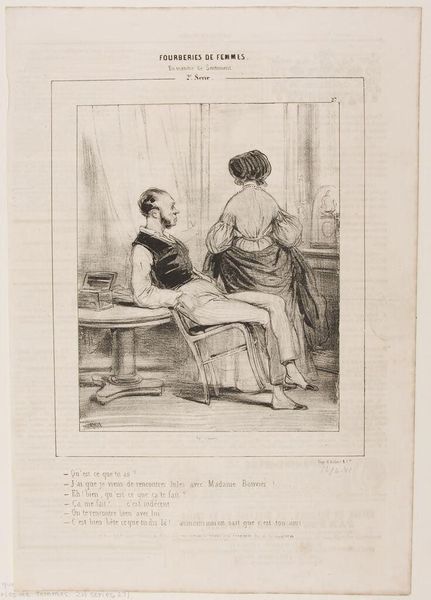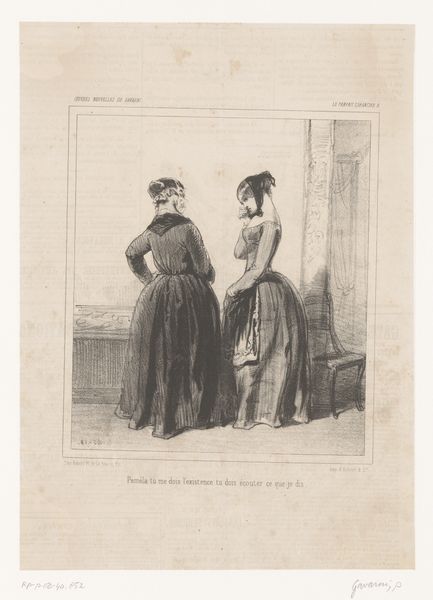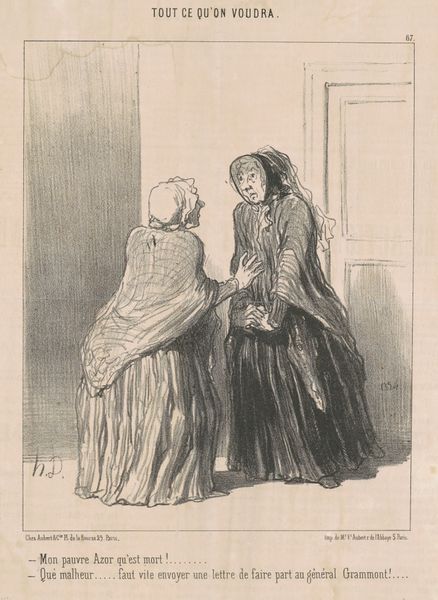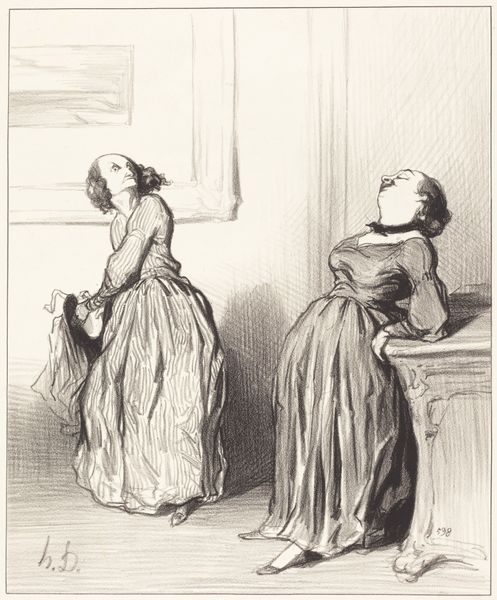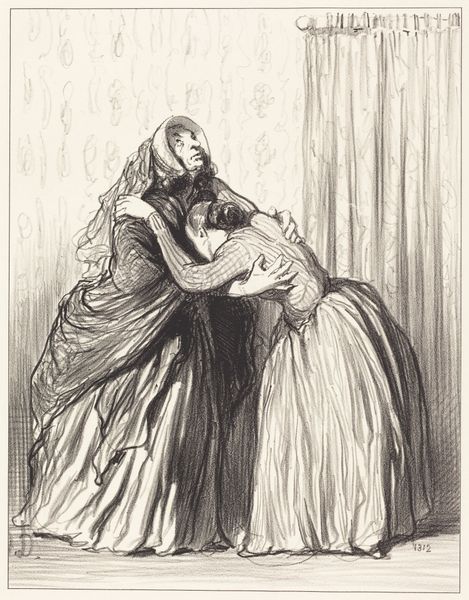
lithograph, print, etching
#
16_19th-century
#
lithograph
# print
#
etching
#
caricature
#
old engraving style
#
romanticism
#
genre-painting
Dimensions: overall: 32.9 x 23.4 cm (12 15/16 x 9 3/16 in.)
Copyright: National Gallery of Art: CC0 1.0
This print, by Paul Gavarni, was likely made using a lithographic process. This method, which became widespread in the 19th century, involves drawing on a stone or metal plate with a greasy crayon, then using ink to transfer the image to paper. Look closely, and you can see the delicate lines and tonal variations achievable through lithography. The process allowed for relatively quick and inexpensive reproduction, making images like this accessible to a wider audience. Gavarni was a master of capturing Parisian life, and the print reflects the growing culture of mass media and visual consumption during the Industrial Revolution. Consider the social context: lithography democratized image-making, challenging traditional hierarchies between art and craft. Artists like Gavarni blurred these boundaries, using industrial techniques to create insightful commentary on contemporary society. So, next time you encounter a print, think about the materials, the making, and the broader cultural landscape that shaped its creation.
Comments
No comments
Be the first to comment and join the conversation on the ultimate creative platform.
